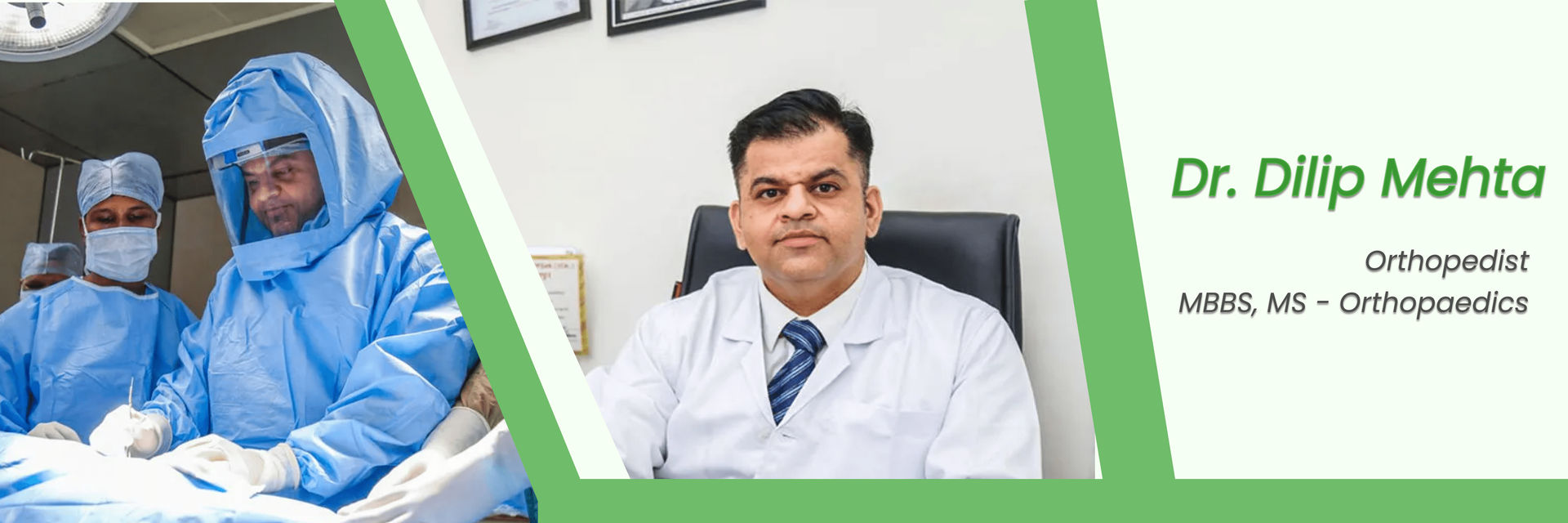The Achilles tendon, the strongest in the human body, plays a crucial role in transmitting force from the calf muscles to the foot. Unfortunately, it is also one of the most frequently ruptured tendons in the leg. When faced with an Achilles tendon tear, doctors often recommend surgery for moderate to severe injuries.
But have you ever wondered about the long-term impact three years after Achilles tendon surgery?
Yes, it can be life-changing.
This surgery helps restore strength and flexibility, enabling you to walk, run, and jump again. The global incidence of Achilles tendon ruptures is estimated to be around 18 per 100,000 people, with an increasing trend due to more people engaging in physical activities. This blog shares long-term experiences and insights, focusing on healing, physical changes, rehabilitation, lifestyle adjustments, and quality of life three years after surgery.
Dr. Pramod Bhor, an orthopedic &joint replacement surgeon, shares his insights:
"Three years after Achilles tendon surgery, most patients regain significant strength and flexibility. Minor stiffness or occasional swelling, especially after intense activity, is normal. Consistent physical therapy and maintaining an active lifestyle are crucial for the best long-term results."
For personalised advice and a comprehensive recovery plan, consult with Dr.Pramod Bhor, an expert in orthopaedic surgery and tendon rehabilitation.
The Healing Process
Wondering what the road to recovery looks like after Achilles tendon surgery?
- The Immediate After Surgery: In the initial weeks following Achilles tendon surgery, you can't mobilize and bear weight. Patients often this period with the help of crutches and a protective boot, focusing on allowing the body to start the healing process.
- Year One: Building Foundations The first year is crucial. Patients typically transition from non-weight-bearing to gradual weight-bearing, with physical therapy playing a pivotal role. The emphasis is on regaining mobility and strength while preventing re-injury. By the end of the first year, many patients can return to daily activities with some limitations.
- Year Two: Gaining Momentum In the second year, the focus shifts to regaining strength and flexibility. Patients work on improving their range of motion and may start engaging in low-impact exercises. It’s a year of noticeable progress and a test of patience as the tendon continues to heal and adapt.
- Year Three: Nearing Normalcy By the third year, most patients have made significant strides. The tendon has healed, and while it may never be quite the same as before the injury, functionality is often significantly restored. Patients can usually engage in more strenuous activities and even return to sports cautiously and under medical guidance.
Challenges Faced During Recovery
- Pain and Swelling: Common in the initial months, managed with rest and medication.
- Stiffness and Weakness: Regular physical therapy helps improve flexibility and strength.
- Fear of Re-injury: Gradual return to activities and consistent rehab reduce this risk.
- Mental Challenges: Patience and motivation are crucial; support from healthcare providers and loved ones helps.
Stay committed to your recovery plan and share your progress with your healthcare team!
Long-Term Physical Changes Post 3 years Achilles Tendon Surgery
Curious about the lasting effects on your body after Achilles tendon surgery? Here’s what to expect!
Strength and Flexibility Improvements
- Patients typically experience significant functional improvement three years after surgery. Walking, running, and other daily activities become more manageable. The repaired tendon gradually adapts to stress, allowing you to regain strength and flexibility.
- Strength Gains: You will experience significant improvement in calf and lower leg strength, allowing you to regain much of your pre-injury power.
- Flexibility: Enhanced flexibility in the Achilles tendon and surrounding muscles helps perform various activities easily.
- Progress: Steady progress with regular exercises, often reaching near pre-injury levels after consistent effort.
Changes in Mobility and Range of Motion
- Mobility: Noticeable improvements, allowing for more natural movement and better balance.
- Range of Motion: Gradual return to full range of motion with consistent stretching and rehabilitation.
- Activities: Ability to perform daily tasks and engage in sports without discomfort.
Persistent Issues or Limitations
- Minor Stiffness: Occasional stiffness can be expected, especially in the morning or after prolonged inactivity.
- Pain levels decrease over time. Although you may initially experience discomfort during movement, this tends to improve significantly by the three-year mark. Some patients may still feel mild stiffness or soreness, especially after intense physical activity.
- Sensations: Some people experience numbness or tingling in the area, but these sensations often decrease over time.
- Scar tissue forms during the healing process. At three years, the scar is usually less noticeable and less restrictive. Regular stretching and mobility exercises can help prevent excessive adhesions around the tendon.
Rehabilitation and Physical Therapy
Wondering why consistent rehab is crucial for your Achilles recovery? Let’s find out!
Importance of Consistent Rehab Exercises
- Healing: Essential for proper tendon healing and strengthening, which helps you regain full function.
- Prevention: Regular rehab exercises help prevent re-injury and maintain tendon health.
- Recovery: Consistent exercises speed up recovery and lead to better long-term outcomes.
Types of Exercises Recommended
- Strengthening: Calf raises and resistance band exercises are beneficial.
- Flexibility: Gentle stretching exercises and yoga poses enhance flexibility.
- Balance: Single-leg stands and balance board exercises improve stability and coordination.
Role of Physical Therapy in Long-Term Recovery
- Guidance: Provides expert guidance on exercises and recovery techniques tailored to your needs.
- Monitoring: Regular check-ins to track your progress and adjust the rehab plan.
- Support: Offers emotional support and motivation throughout the recovery journey, ensuring you stay on track.
Lifestyle Adjustments
How do you adapt your lifestyle after Achilles tendon surgery? Here are some tips!
Modifications in Daily Activities
- Walking: Gradual increase in walking distance and speed helps in regaining strength.
- Standing: Avoid prolonged standing; take breaks to prevent strain.
- Footwear: Wear supportive shoes to reduce strain on the tendon and improve comfort.
Impact on Sports and Physical Activities
- Low-Impact Activities: Engage in activities like swimming, cycling, and using the elliptical machine.
- High-Impact Sports: Gradual return to running, basketball, or tennis with proper precautions.
- Warm-Ups: Always warm up and stretch before engaging in any physical activities to prevent injuries.
- Athletes who underwent Achilles surgery can often resume their sports activities by the three-year mark. It’s essential to follow a gradual return-to-sport program, focusing on agility, balance, and proprioception.
Tips for Preventing Re-Injury
- Consistent Exercises: Continue strength and flexibility exercises as part of your routine.
- Proper Technique: Use correct techniques during sports and physical activities to avoid undue stress on the tendon.
- Listen to Your Body: Rest and seek medical advice if you experience pain or discomfort.
Dr. Pramod said, "Maintaining tendon health is essential for overall musculoskeletal function, and I often emphasize several tips to my patients. Regular physical activity, including strength training and flexibility exercises, can help keep tendons strong and flexible. Additionally, it's crucial to avoid overuse and repetitive strain on tendons, as this can lead to inflammation and injury. Proper nutrition, including adequate protein intake and hydration, is vital in supporting tendon health."
Psychological Impact
Ever wondered how Achilles tendon surgery affects you mentally? Let’s explore!
Mental and Emotional Challenges Post-Surgery
- Frustration: It's common to feel frustrated due to movement and daily activities limitations.
- Anxiety: Worrying about re-injury or slow progress can affect your mental health.
- Depression: Some may experience depression due to prolonged recovery and lifestyle changes.
Seek support and stay positive to overcome mental challenges! schedule your appointment now.
Conclusion
Reflecting on the journey three years post-Achilles tendon surgery, it's clear that patience, persistence, and consistent rehabilitation are key to a successful recovery. While the path may include challenges such as stiffness or mental hurdles, the significant improvements in strength, flexibility, and mobility make it worthwhile. A full return to pre-injury activities is achievable with the right support, lifestyle adjustments, and dedication to maintaining tendon health.
Reflect on your journey and share your experiences to help others! - call us to book your appointment today
Reference
https://pubmed.ncbi.nlm.nih.gov/21533539/
https://www.sciencedirect.com/science/article/abs/pii/S0958259220301073






